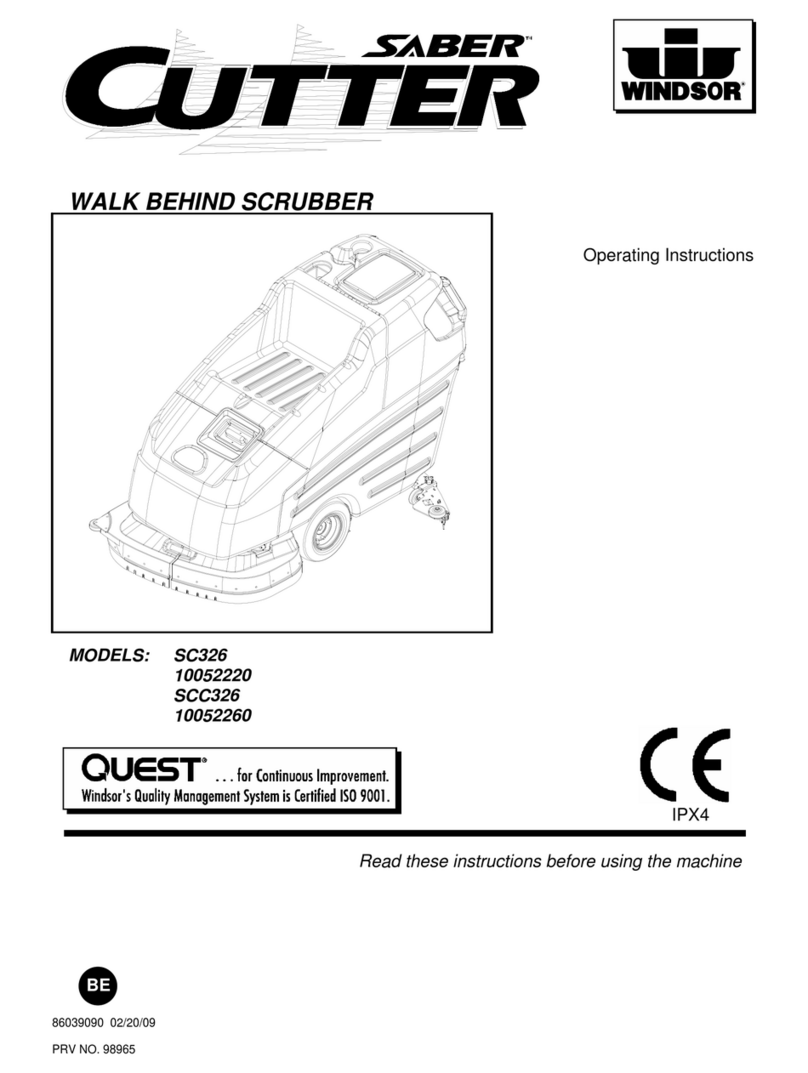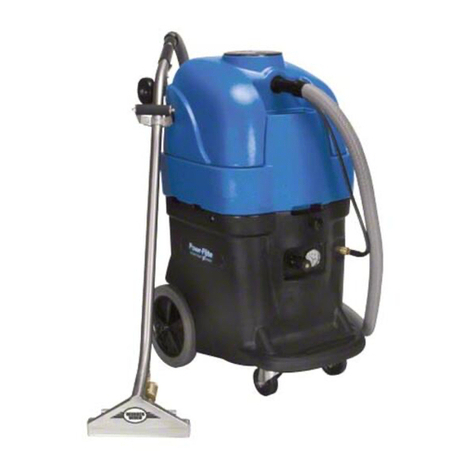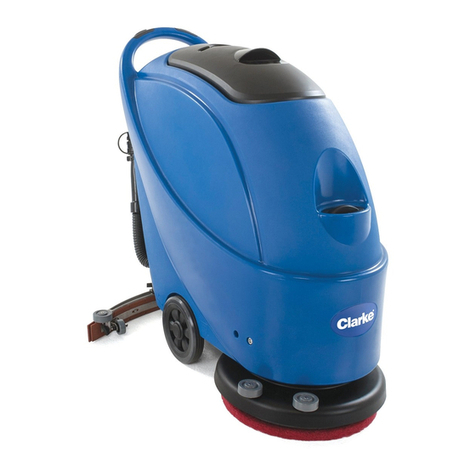GMATIC Rotan 155 BTX User manual

SCRUBBER DRYER
Operating Manual
V.4.0.4

Table of Contents
1. Important machine elements................................................................................................................................5
2. Warning notes...........................................................................................................................................................8
3. Installation charger................................................................................................................................................10
4. Battery instructions...............................................................................................................................................10
5. Commissioning .......................................................................................................................................................11
6. Operation....................................................................................................................................................................12
7. Hygiene maintenance ...........................................................................................................................................15
8. Hygiene plan ............................................................................................................................................................18
9. Troubleshooting......................................................................................................................................................19
10. Overview of wear parts ........................................................................................................................................20
11. Change suction lips...............................................................................................................................................21
12. Brush change...........................................................................................................................................................22
13. CE-Certificate............................................................................................................................................................23

5
1. Important machine elements
4
1. Emergency switch
2. Horn
3. Rotary switch (forward/backward)
4. Head lights (on/off)
5. Signal light fresh water (empty)
6. Signal light waste water (full)
7. Key switch (on/off)
8. Brush unit (up/down)
9. Suction motor switch (on/off)
10. Steering wheel
11. Brush unit
12. Battery tray
13. Fuel cap
14. Water tank
15. Suction unit
10
11 15
14
13
12
4
3
56
7
8
9
1
2

6 7
16. Drain tap fresh water
17. drain tap waste water
18. Suction hose
19. Rubber lip (back)
20. Foot throttle
21. Head light
22. Signal lights
23. Seat position (forward/backward)
24. Weight adjuster for seat
25. Machine plug
26. Machine connector
37. Water adjustment
16 17
18
19
21
22
20
24
27
23 25
26

8 9
2. Warning Notes
●This machine is not suitable for removing dust that
presents a health hazard!
●This machine is only intended for wet cleaning of
non-textile floors!
●This machine is not approved for use on public paths
or roads!
●This machine may only be used by persons, who
have been instructed in and expressly familiarised
with its use!
●To prevent unauthorised use, the key must always be
removed from the key switch [7] when leaving the
machine unattended!
●The machine must be secured against accidental
movements when left unattended by operating the
foot brake.
●Always watch for others, and in particular children,
when working with the machine!
●The machine is only approved for use on flat
surfaces up to a maximum inclination of 2%!
Note: The installation and / or the use of other
than Rotan™ original parts and accessories can
negatively change the design characteristics or
even impair the active and / or passive driving sa-
fety of your cleaning machine! The manufacturer
excludes any liability for damage caused by the
use of parts and accessories other than Rotan™!
●When cleaning and performing maintenance on the
machine and when replacing parts:
-the red machine plug [25] must be removed from
the battery socket outlet [26] (on the back of the
machine)
-the key must be removed from the key switch [7].
●Charging cables (connection cable from the charger
to the machine) must not be modified, in particular
not extended!
●Brand new batteries can not deliver the full power
yet, but only after activating the first 8 to 10 charging
or discharging cycles. Therefore do not use the
machine for an over-extended period of time.
●Never cover the top lid [13] with heavy objects for an
extended period of time (to protect the sealings, as
well as to avoid warping)!
●Before using the batteries, read the enclosed
documents:
-Operating instructions for the batteries
(see 4. Batteries).
-Operating instructions for the charger
(see 3. Charger)
2.1 Wet Batteries:
Note: Always pay attention to the use of supplied
wet batteries (does not apply to maintenance-free
batteries):
-Battery gases from wet batteries are highly
explosive! Avoid sparking and open flames
near the battery!
-Good air circulation must be ensured in
rooms in which wet batteries are charged!
-To avoid gas formation during the charging
process of the batteries, please note: Always
keep the water tanks folded up as far as they
will go!
2.2 questions and answers
Tel. +49 2389 40 30 20
AS OF
08/2020 OPERATING INSTRUCTIONS
Scope of application
Gmatic®scrubber drier (ride-on)
Dangers for humans and the envirnoment
Injuries caused by collision with people and damage to objects.
Fall injuries. In the event of irregular and / or improper maintenance, there is a risk of injury from residual
moisture behind the squeegee.
Crash Injuries. Do not use the scrubber drier on the ramp table and keep a safety distance of 30cm to pre-
vent people and machines from falling down.
Hand injuries due to pinching or crushing. If the water tank has been folded up for emptying, there is a risk
of injury by folding or squeezing your fingers between the tank and the machine chassis while folding back
into the starting position.
Protective measures and rules of conduct
Use only by trained personnel. Observe the manufacturer‘s operating instructions.
Wear sturdy shoes.
For hygienic reasons, wash hands before and after use.
Do not park the scrubber drier on escape routes or in front of emergency exits.
Park securely against rolling away. In the case of machines without a parking brake, the brush head must
be lowered for safety.
The tank is only emptied into a designated floor drain and not over the ramp table into the outside area.
Response to malfunctions
When detecting malfunctions, do not use the scrubber drier and secure it against any further use. Remove
the key and do not leave it to unauthorized persons. Pull the machine plug. Inform responsible persons. Call
hotline if you have any questions: 02389 403020
First aid
Keep Calm. Consult first aider. CALL EMERGENCY: 112
Inform those responsible. To report an accident.
Serving and maintenance
Servicing and maintenance only by trained personnel or a specialist company. Work gloves must be worn
during maintenance work (especially changing brushes).
After each use: Empty the dirty water tank and rinse it thoroughly (including the float switch). Remove
blockages in suction and drain hoses. Clean the underside of the squeegee. If the suction power drops,
the suction lips must be turned. Wear parts such as tank seals, suction lips, hoses and brushes must be
requested in the workshop in good time.
This manual suits for next models
2
Table of contents
Popular Scrubber manuals by other brands

Windsor
Windsor Saber Cutter SC326 10052220 operating instructions

Powr-Flite
Powr-Flite PFX1380 SERIES Operators manual and parts lists

Olympus
Olympus M200H operating manual

Clarke
Clarke BEXT 100H Operation?and safety

JOHNY VAC
JOHNY VAC JVC70BCT user guide

RCm
RCm Elan Series Instruction and maintenance handbook











